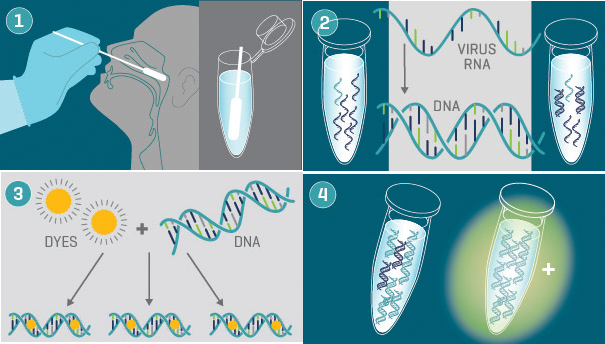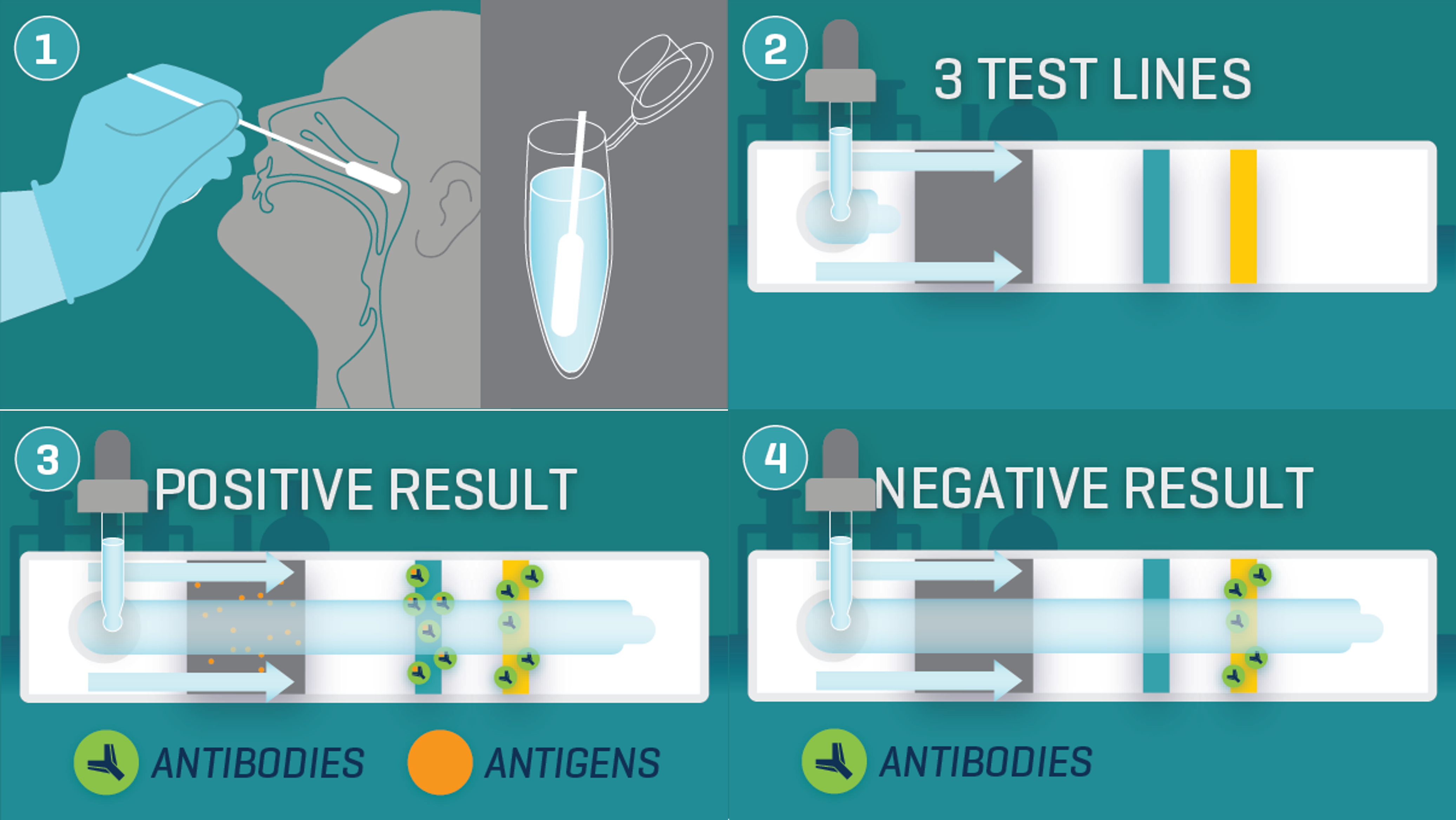What are at-home COVID-19 testing kits?
At-home COVID-19 testing kits are kits that anyone can order and use to determine if he or she has COVID-19. COVID-19 testing kits have been approved by the FDA (Food and Drug Administration) for emergency use, but this does not mean that COVID-19 testing kits are officially approved. Some at-home tests must be sent to a lab to analyze and determine the results, while others can display results without being analyzed in a lab.
How do the coronavirus testing home kits work?
There are three types of COVID-19 testing kits, molecular (PCR) tests, antigen tests, and serological tests.Molecular tests attempt to detect whether SARS-CoV-2 genetic material is found in the sample. Since they search for the virus's genetic material, they are the most accurate tests. Using techniques like reverse transcription polymerase chain reactions (RT-PCR) and isothermal amplification, the test first amplifies the genetic material and then compares the genetic material to the virus's genetic material. Molecular tests can detect both COVID-19 and the flu at the same time, allowing you to determine if your sickness has been caused by COVID-19 or the flu. CRISPR-based tests are also molecular tests. CRISPR stands for clustered regularly interspaced short palindromic repeats. It uses gene editing and cuts genetic material. This allows the test to quickly determine whether COVID-19 is found or not.
Antigen tests attempt to determine whether specific proteins are found on the surface of the virus. They are cheaper than molecular tests, but they are not as accurate. Antigen tests are also called rapid tests because they are faster than molecular tests.
Serological tests detect antibodies for SARS-CoV-2. This allows the tests to determine whether you have recently contracted a COVID-19 infection (even if you had it in the past). Antibodies are produced to destroy viruses and, once created, will never completely disappear. Serological tests usually detect IgM (immunoglobulin M) and IgG (immunoglobulin G) antibodies.

How are samples collected for the tests?
Samples can be collected by nasopharyngeal swabs, which are 6 inch long swabs inserted into the nose. The swab is put into both nostrils for 15 seconds in each nostril. The swabs are sent to a lab for processing.
Saliva samples can also be used. To obtain saliva, you simply must spit into a tube.
For serological tests, blood samples must be collected to search for antibodies. Since an at-home blood draw may pose a biological hazard, there are no currently authorized at-home antibody tests.
So exactly how accurate are at-home COVID-19 tests?
Most at-home tests are accurate enough, and the accuracy can be improved if the test is repeated multiple times. PCR tests replicate parts of the virus in the sample, so it is very likely that the result is accurate.
Antigen tests are less accurate and studies have revealed that they are only accurate about 72% of the time because they are unable to 'see' small parts of the virus. Antigen tests are more accurate when the virus is at its peak and symptoms are displayed.
A more biological explanation of how COVID-19 tests work
First up is the PCR test:- A nasal swab is taken.
- The virus's genetic material in the form of RNA is extracted and purified. Using reverse transcription, the RNA is converted to DNA.
- The DNA is mixed with primers that bind to the DNA. PCR, which is a repeated series of steps, rapidly copies the virus DNA. Isothermal amplification can also be used. Unlike PCR, isothermal amplification does not require different temperatures to amplify the DNA and can occur at room temperature. Fluorescent dye molecules can also be added. They bind to the virus DNA while the DNA is being copied, causing the sample to glow.
- If the sample starts to glow, the sample does contain viral DNA and the subject does have COVID-19. If the sample stays dim, the subject does not have COVID-19.

Next is the rapid antigen test:
- A swab is taken from the nose or throat.
- The sample is placed onto a paper strip that has 3 lines of antibodies that bind to other proteins called antigens. The first line of antigens binds SARS-CoV-2 proteins, the second line binds to similar antibodies, and the third line does not bind to the virus. The third line can be used as a control, and antibodies cannot bind to them.
- The viral proteins flow down the paper strip and are bound by detector antibodies. Most of the antigens bind at the first line, but some others pass through the first line and bind to the second control line. When the antigens bind to the line, a strip appears on the display. The two colored lines indicate the presence of viral proteins on both lines of antibodies.
- A negative result is indicated by one line on the display. This is because all of the antigens skip the first line and bind to the second control line.

Finally, the serology test:
- First a blood sample is taken and sent to the lab.
- Red blood cells and clotting factors are removed from the blood sample and a clear serum remains. The serum contains the antibodies that fight against coronavirus.
- Dishes are coated with bits of SARS-CoV-2 proteins and the clear serum is added to the dish.
- If the clear serum contains SARS-CoV-2 antibodies, the SARS-CoV-2 proteins will bind to the antibodies.
- Some detector antibodies will also bind to the antibodies in the clear serum, causing it to turn blue and reveal that the patient has contracted COVID-19 at some point.

